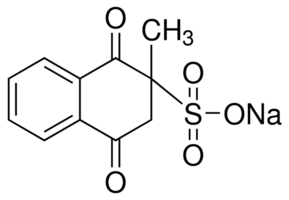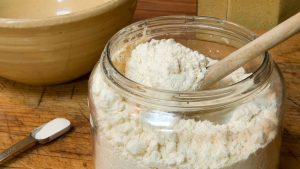What is Natamycin E235
Natamycin E235 (Pimaricin) is a natural antifungal preservative manufactured by a pure culture of Streptomyces spp. Streptomyces Natalensis, following a strictly controlled fermentation process.
Natamycin E235 (Pimaricin) is a natural preservative, also called pimaricin, mainly used as a natural mould and yeast inhibitor. As a food additive, it has E number E235.
Natamycin E235 (Pimaricin) inhibits not only the growth of various moulds and yeasts, but also the production of their toxins. It can greatly extend the shelf-life of cheese (cream cheeses, cottage cheese, sour cream, yogurt, shredded cheeses, cheese slices), baked food, meat and beverage products.
Natamycin E235 (Pimaricin) also called as a Biological preservative, natamycin preservative, E235 food additive, natural mold inhibitor.
Properties
Natamycin E235 (Pimaricin) is a white to yellow flavorless, odorless crystalline powder. It is stable with its crystal form. Natamycin solubility is very low in water and in most organic solvents. Only 50mg Natamycin E235 (Pimaricin) can be dissolved in pure water at room temperature. The low solubility in water makes it very suitable for use on the surface of food. Natamycin E235 (Pimaricin) will stay on surface of food, where most molds and yeasts may grow, but does not influence the natural course of fermentation inside.
Natamycin is stable at a wide pH range (3-9). As most foods have a pH value between pH 4 and pH 7, making Natamycin a very versatile food preservative that prevents yeasts and moulds from appearing in foods. Natamycin works at low dosages between 3-20 ppm than other food preservatives like potassium sorbate, and unlike other sorbates it prevents yeasts and moulds from migrating into the product, eliminating the cost of reapplication.
In addition: Natamycin is most effective at pH level between 5 and 7. Between pH 3 and 5, the activity decreases by 8 to 10%. Below pH 4 and above pH 9, the antifungal effectiveness may be reduced by as much as 30%.
Manufacturing process
As a safe E235 food additive, Natamycin (Pimaricin) is produced by the controlled fermentation of Streptomyces Natalensis.
Mechanism of action

Natamycin structure
Natamycin (Pimaricin) is a Polyene macrolides structure. Natamycin relies on its lactone ring structure can combine with sterol compounds on the fungal cell membrane to form antibiotic-sterol compounds, that can destroy the structure of the fungal cytoplasmic membrane. Macrolide hydrophilic part (polyol part) can damage cell membrane permeability by forming water holes in the membrane, and then cause amino acids, electrolytes and other substances in the fungal exudate and finally cause fungal cell death. Natamycin has no effect on microorganisms who has no sterols on the cell membrane and therefore Natamycin can only inhibit fungi and can not have antibacterial activity against bacteria and viruses.
Application & use
Natamycin E235 (Pimaricin) is an antifungal preservative which have broad and effective action. It not only inhibits the growth of different moulds and yeasts, but also inhibits the production of their toxin. Commercial Natamycin usually contains 50% of the active substance like Natamycin 50% in Glucose, Natamycin 50% in NaCl, Natamycin 50% in Lactose, Natamycin 95%.
Small quantities of Natamycin can inhibit all moulds and yeasts, which cause food spoilage. Natamycin has no effect on bacteria, so it does not prevent in the natural maturing process of yogurt , cheese , fresh ham, sausage and can be used in these food products.
Natamycin E235 (Pimaricin) is a natural, broad spectrum, efficient and safe filamentous fungi inhibitor such as yeast and mold that not only inhibits fungi but also prevents mycotoxin production. Natamycin harmless to the human body, it is difficult to be absorbed by the human digestive tract, and micro-organisms are difficult to produce resistance, but because of its low solubility and other characteristics, usually used for food surface corrosion.
Application & Uses Natamycin in cheese
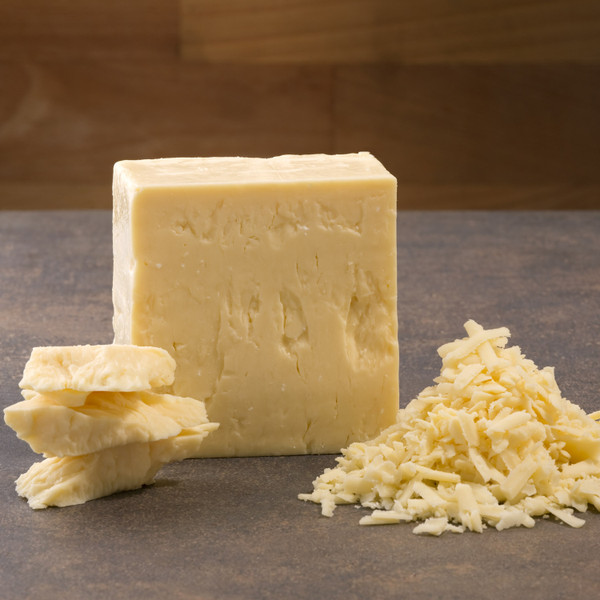
Natamycin E235 (Pimaricin) prevents the cheese from becoming moldy at maturity to limit mycotoxin formation. As it is cannot penetrate the cheese, only stay in the cheese surface, so it has a advantage in control of mold surface growth on cheese, and does not affect the cheese maturation process. There are three Specific application methods 1) 0.05% ~ 0.28% natamycin sprayed on the surface of cheese products 2) soaked cheese in 0.05% ~ 0.28% concentration suspension for 2 to 4 minutes. 3 Add natamycin 0.05% to the coating that covers the cheese.
Application & Uses Natamycin in moon cake
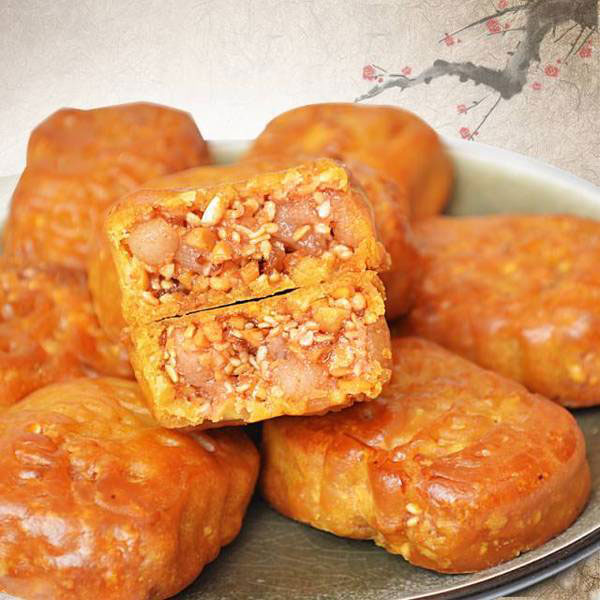
Cake pie filling and salted egg yolk in Mooncake are easy to mildew. Natamycin E235 (Pimaricin) on the moon cake has a good anti-mildew effect. Spray method is generally used: natamycin formulated to 0.02% ~ 0.04% of the suspension, baked moon cake cool down to room temperature, spray the suspension of Natamycin on the surface of the moon cake and around the bottom so that can make sure mould inhibited.
Put Raw egg yolk into the furnace roasted for around seventy-eight mature, remove & cool down and soaked in Natamycin suspension for about 2 minutes, this steps can make sure prevent yolk stuffing mould inhibited.
Application & Uses Natamycin in yogurt
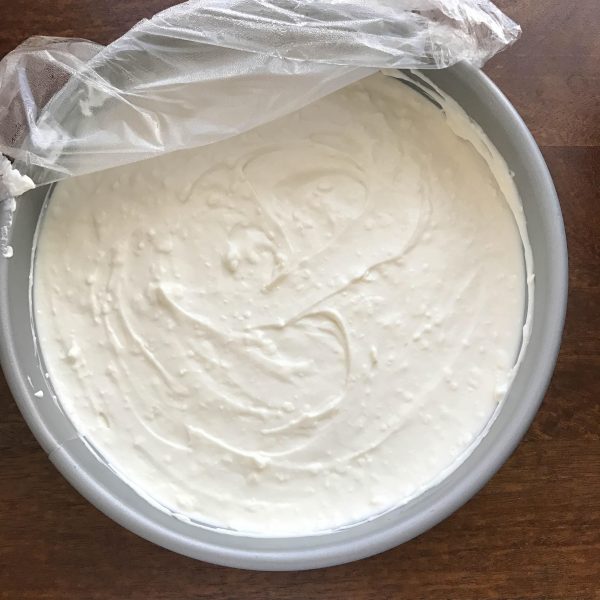
Natamycin preservative E235 (Pimaricin) is widely used as a yogurt antifungal and natural preservative for yogurt. The usage of 5 ~ 10ppm natamycin in yogurt, can extend the shelf life of the yogurt more than 4 weeks.
Application & Uses Natamycin in Bakery
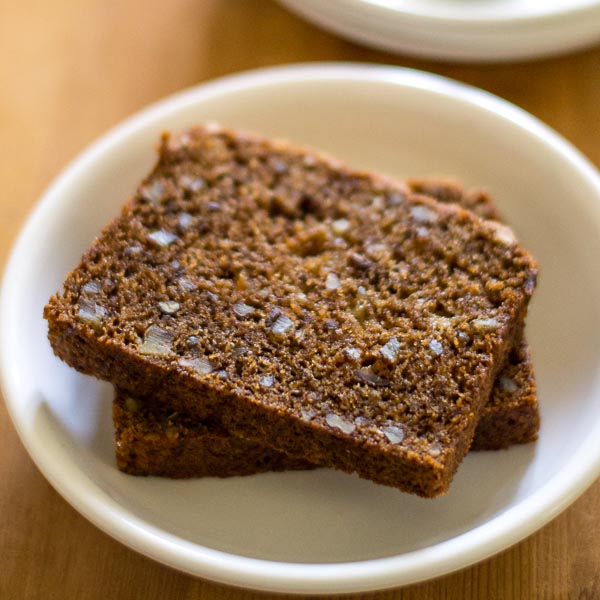
Spraying 100 ~ 500ppm Natamycin E235 solution on the surface of baked goods such as cakes, white breads and shortches, or spray Natamycin on the surface of unbaked dough, the mold inhibition effect is very good and no effect on the taste of the product.
Application & Uses Natamycin in Meat products
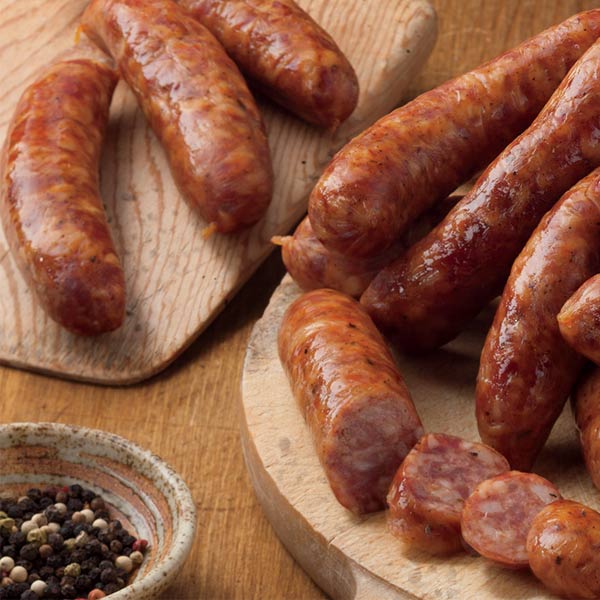
Using a method of soaking or spraying on meat products, 4mg / cm2 Natamycin E235 can be used to achieve a safe and effective anti-mold purpose. Soaking the sausage casing with a Natamycin suspension at a concentration of 0.05% to 0.2% (w / v), or by soaking or spraying the surface of the already filled sausage, effectively prevents growth of mold on the sausage surface. It can also by spraying 0.05% ~ 0.1% (w / v) concentration of natamycin suspension on Barbecue, roast duck and other baked goods and dried fish products to extend the shelf life of the product.
Application & Uses Natamycin in Salad dressing
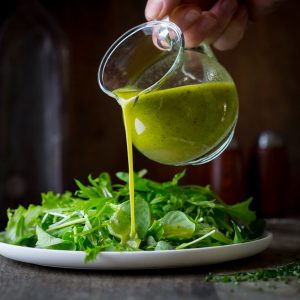
Salad dressing is a kind of high-fat food, often can be contaminated by mold, especially in summer. It is reported that added with 10ppm NatamycinE235 (Pimaricin), no deterioration found in salad dressing during the experiment, and no significant change in the number of microorganisms. Salad dressing with cheese similar, higher fat content, the test shows Natamycin on the high-fat foods antibacterial effect is exact.
Application & Uses Natamycin in soy sauce
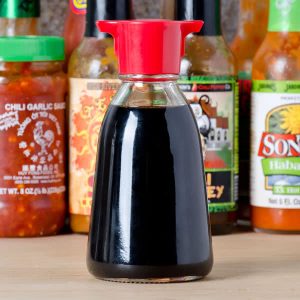
Adding 15ppm of Natamycin E235 in soy sauce in the summer at high temperature, can effectively inhibit the growth and reproduction of yeast to prevent the appearance of white flowers. The combination of Natamycin E235 and Nisin E234 can be more effective in mold preservation in soy sauce and can also reduce the concentration of antibacterial.
Application & Uses Natamycin in Drink
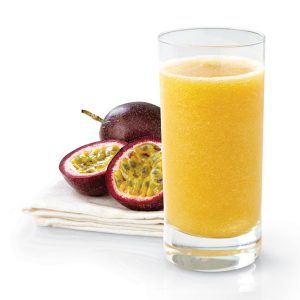
As a result of high sugar content and organic acid content in fruit juice, it is suitable for the growth and reproduction of yeast, so the fruit juice is easy to spoilage. The use of Natamycin E235 can increase the stability of non-alcoholic beverages. Applying 20ppm Natamycin to grape juice can prevent the fermentation of juice caused by the contamination of yeast. It can completely stop the fermentation activity if adding 100ppm Natamycin. Due to fungal contamination, Orange juice is easy to deteriorate within a week under natural conditions. When natamycin is added, the shelf life can be as long as eight weeks, even the doses as low as 1.25 ppm and at 2 ° C to 4 ° C . Natamycin antibacterial effect is associated with the storage temperature, 10ppm can inhibit the growth of yeast if concentrated orange juice stored at 10 ℃; if stored at room temperature, you need 20ppm Natamycin to reach the antibacterial effect. Natamycin 30ppm in apple juice can prevent the apple juice fermentation time up to 6 weeks, and the original flavor of the juice does not changed. Natamycin at a concentration of 70 mg / kg of tomato juice has a good preservative effect on tomato juice.
Application & Uses Natamycin in others
The use of Natamycin E235 in rice cakes and bread, can prevent mildew, and effectively extend the shelf life. Natamycin can prevent mold and yeast-induced deterioration in vinegar and other condiments. In beer and wine, 2.5mg / kg of natamycin can greatly extend the shelf life.
Medical use
Natamycin E235 is used to treat fungal infections, including Candida, Aspergillus, Fusarium, and the like, and it is also used as an eye drop or buccal agent, in which humans have less natamycin absorption. Generally, it is not been absorbed by the gastrointestinal tract from oral intake, thus making it inappropriate for the system of infectious drugs. Natamycin is also used in eye drops and its 5% natamycin content is indicated for the treatment of fungal blepharitis, conjunctivitis and keratitis caused by microorganisms, including Fusarium solani korveritis.
Application & use standard:
U.S.A.: FDA, § 172. 155, 2000: Treat (Spray or dip) the surface of the cheese with 200-300mg/kg aqueous Natamycin solutions.
Europe: Permitted on the surface of cheese and sausage casings
China: GB2760-2001: Natamycin for cheese, meat and meat products, moon cakes, snacks, raw juice for coating use, surface of utensils, perishable food, Salad sauce, Fermented wine, etc.
The FAO/WHO Joint Expert Committee on Food Additive confirmed the acceptable daily intake (ADI) if Natamycin as 0.3mg/KG (total body weight). This was also endorsed by the EU. In China its use is permitted in the food industry.
Method of application & use and Recommed dosage
Direct adding: Natamycin E235 (Pimaricin) used in yoghourt, fresh milk and other liquid food or blended foods, such as 10-40g Natamycin E235 is mixed with 1L water and produced into suspension liquid, and then add it into a ton of yoghourt. The mixing time is determined according to the viscosity.
Surface soaking method or spraying method: Natamycin E235 (Pimaricin) is used in meat product, vegetarian diet, cheese and other solid food, such as ham, sausage, bacon, smoked chicken, soy products or other vegetable food such as steamed bean curd roll, gluten, dried bean curd, etc.
Soaking method: put the accurately processed food into the Natamycin suspension liquid (1-2g Natamycin is added into 1L 8-10%Nacl solution). The suspension liquid should be stirring to maintain uniform, the temperature Natamycin suspension liquid should be kept in 20-30℃.
Natamycin Market
Natamycin manufacturers
There are several Natamycin E235 (Pimaricin) manufacturers in China and abroad, as you know, the price of China Natamycin suppliers can be better than abroad manufacturers. We have worked with China top Natamycin manufacturer for years, we would like to recommend this Natamycin brand to you if you would like to save your purchasing cost with the same Natamycin quality compared with abroad Natamycin manufacturers. Natamycin E235 (Pimaricin) Samples are available if you need it for further test after accept the price.
Natamycin price
Now the price of Natamycin is around USD/kg from China Natamycin manufacturers and suppliers.
Where to buy Natamycin E235
All the products listed in our website are from the manufacturers we have worked together for many years. The professional working experience backup our confidence to their quality. We sell Natamycin for many years and we can be your Natamycin suppliers in China. If you would like to buy Natamycin or inquiry price for Natamycin 50% in Glucose, Natamycin 50% in NaCl, Natamycin 50% in Lactose, Natamycin 95% please e-mail us through: info@foodsweeteners.com
Natamycin E235 Market trend
Most of the food products contains preservatives, in order to increase the shelf-life. Natamycin is a natural preservative and due to its long-lasting effect, ability to preserve the taste making it popular in users.
Natamycin E235 (Pimaricin)is used as an antifungal preservative to the products in the food industry, as its application is considered to be the most effective and natural method for preservation. The increasing global demand for processed, dairy, and meat products is expected to boost the demand for Natamycin. Most of these products are susceptible to contamination, due to the rapid growth of mould that affects the product quality and leads to its deterioration. Among most antifungal preservatives such as Sorbic acid, potassium sorbate, and lactic acid, Natamycin stands out due to its longer-lasting antifungal effect better than other compounds. In addition, it is completely natural that makes it a preferred additive in food industry, due to the increasing number of health-conscious consumers.
Natamycin E235 (Pimaricin) is a safe natural food preservative that is approved and used in more than 150 countries around the world. The World Health Organization (WHO), European Food Safety Authority (EFSA) and Food and Drug Administration (FDA) have evaluated Natamycin thoroughly and all list it as safe for human consumption.
Latest notification: FDA approves Natamycin in non-alcoholic beverages. COFEPRIS (Mexico) approves Natamycin in yogurt and non-alcoholic beverages.
USA: Natamycin E235 is used in cheese, including shredded cheese (max. use level 20mg/kg in the finished product)
Europe: Natamycin E235 is used on the surface of semi-soft to hard cheese and dried, curried sausage (max. use levels of 1mg/sq dm, not present at a depth of 5mm)
Mexico: Natamycin E235 is used in non-alcoholic beverages (max. use level of 5mg/L), bread (max. use level of 14mg/kg) and tortillas (max. use level 20mg/kg)
South Africa: Natamycin E235 is used in fruit juices (max. use level 5mg/kg) and in yogurt (max. use level 10mg/kg) as yogurt antifungal.
China: Natamycin is used on pastries (max. 300mg/kg in spray or for dip such that residue level in food shall be less than 10mg/kg).
Natamycin Health and Safety information
Natamycin is considered safe as a natural mold inhibitor in cheese, meat, yogurt, drink and other food within use level.
- ADI (Acceptable Daily Intakes) 0 ~ 0.3mg/kg (FAO/WHO, 1994)
- Safe to apply on food (FDA, §172.155, 1994)
- LD50 2.73g/kg (experiment with matured male mouse)
June, 1986, US FDA formally approved that Natamycin can be used as food antiseptics. In 1996, China National Standardization Technical Committee for Food Antiseptics formally approved that Natamycin can be used as food antiseptics.
FAO/WHO Joint Expert Committee on Food Additives (JECFA) stipulated that human can unconditionally accept 0.3mg Natamycin per kg body weight. JECFA/EC also authorized and approved this standard. Human general ADI (acceptable daily intake) is far lower than safety dose, even the cheese and sausage which have large consumption.
FAQ
Is Natamycin gluten free?
Natamycin is a natural mold inhibitor. It is safe to say that natamycin is gluten free. Streptomyces natalensis doesn’t contain gluten, and there are no gluten used during the fermentation to produce Natamycin, so Natamycin is gluten free.
Natamycin allergy
Natamycin allergy symptoms, like rash; hives; itching; red, swollen, blistered, or peeling skin with or without fever; wheezing; tightness in the chest or throat; trouble breathing, swallowing, or talking; unusual hoarseness; or swelling of the mouth, face, lips, tongue, or throat
Source: https://www.drugs.com/cdi/natamycin.html
How much preservative to use in food?
Preservatives including artificial food preservatives and Nature food preservatives. Artificial food preservatives are produced by chemical synthesis, natural food preservatives are fermented or extracted (like some plant extract)
Most common used preservatives in food and you’ll find the this preservatives in the food label:
| E-Number | Preservatives | Uses & Application in food |
| E 200-203 | Sorbic acid and sorbate compounds | cheese and yogurt, dried fruit, fish, meat, pickles, olives, soups, prepared salads, jelly, syrups, wine, beer, soft drinks and baked goods |
| E 210-213 | Benzoic acid, and benzoate | Pickled vegetables, low sugar jams and jellies, fruit juice, sparkling drinks, soft drinks, and pickles. |
| E 220-228 | Sulphur dioxide and sulphite compounds | Dried fruits, fruit preserves, potato products, wine |
| E 235 | Natamycin | Surface treatment of cheese and sausage |
| E 249-252 | Nitrite and nitrate compounds | Sausage, bacon, ham, foie gras, cheese, pickled herring |
Natamycin has many advantages over other antimycotic preservatives such as Potassium Sorbate, the comparison as follows:
| Natamycin | Potassium Sorbate |
|---|---|
| Natural | Chemical |
| Fungicidal | Fungi static |
| No effect on bacteria | Bactericidal |
| No migration into food | Penetrates into food |
| No flavor | Bitter flavor and “back of throat burn” |
| Effective at 1-40 mg/kg | Effective at 1000-2000 mg/kg |
| Effective at pH range 3-9 | Effective only at acidic pH |
Does cheese have preservatives?
Many people are shying away from foods with less-than-natural ingredients. But what they don’t know is that, without added preservatives and food preservation processes, many of the foods we love today would never make it to the dinner table.
The most common used preservative in cheese is sorbic acid which is chemical synthesized, due to its ability to effectively inhibit the growth of yeast and mold while still allowing “good” bacterial activity.
It can be replaced by Natamycin, a naturally occurring antifungal agent produced by fermentation of streptomyces natalensis.
Is it safe to eat cheese with mold?
Cheese with sorbic acid or Natamycin or other preservatives that extend the shelf life or contaminated, it will grow mold.
Soft cheeses, such as cottage cheese, cream cheese and ricotta cheese, with mold should be discarded. The same goes for any kind of cheese that’s shredded, crumbled or sliced.
With these cheeses, the mold can send threads throughout the cheese. In addition, harmful bacteria, such as listeria, brucella, salmonella and E. coli, can grow along with the mold.
Is mold on cheese harmful?
Of course, not all molds pose a risk. In fact, some types of mold are used to make cheeses, such as Brie and Camembert. These molds are safe to eat.
Documents Reference
Here you will find the relevant regulatory documents and safety overviews regarding Natamycin from a selection of key countries.
Safety reports and opinions
- Joint FAO/WHO Expert Committee on Food Additives (2007). Evaluation of certain food additives and contaminants : 67threport of the Joint FAO/WHO Expert Committee on Food Additives. WHO Technical Report Series No. 940.
- EFSA (2009). Scientific Opinion on the use of Natamycin (E 235) as a food additive. EFSA Panel on Food Additives and Nutrient Sources added to Food (ANS). EFSA Journal; 7(12): 1412.
- Science Opinion Article (2014) – by Roxanne Khamsi (science reporter and editor – New York City). com.
Regulatory information
- COFEPRIS (2016). Adictiones al Anexo I Aditivos con diveras clases funcionales y con una IDA establecida. Published 30 May 2016 COFEPRIS Anexo 1 ref 79.
- FDA (2015). ICFSAN/Office of Food Additive Safety. GRAS Notice Natamycin. Published: 6 November 2015. fda.gov.
- FDA (2014). ICFSAN/Office of Food Additive Safety. GRAS Notice Natamycin. Published: 21 November 2014. fda.gov.
- GSFA Online (2013). Food Additive Details. GSFA Provisions for Natamycin (Pimaricin). CODEX alimentarius.
- Food and Drug Administration, HHS (2001). US Regulation 21 CFR § 172.155 Natamycin (pimaricin) GPO.
- EUR-Lex (2013). Regulation (EC) No 1333/2008 of the European Parliament and of the Council of 16 December 2008 on food additives. European Commission.
- Food and Drug Regulations (2014). Canada F&DR Division 16 Food Additives, Part III Food additives that may be used as Class III preservatives. Ministry of Justice.
- Australia New Zealand Food Standards Code (2011). Standard 1.3.1 – Food Additives – F2011C00892. Standard 1.3.1 Food Additives Schedule 1. Australian Government ComLaw.
- CIRS (n.d.) GB 2760-2011 Food Safety National Standards for the Usage of Food Additives. Chemical Inspection & Regulation Service.
- Jetro (2006). Food Sanitation Law in Japan. Japan External Trade Organization.
- FAOLEX (2007). Foodstuffs, Cosmetics and Disinfectants Act, 1972 (Act 54 of 1972). Regulation – Preservatives and antioxidants. Legislative database of FAO Legal Office.
Technical information
- DSM (2013). Delvo®Cid: Putting natamycin to work.
- te Welscher Y.M., ten Napel H.H., Balagué M.M., Souza C.M., Riezman H., de Kruijff B., and Breukink E. (2008). Natamycin blocks fungal growth by binding specifically to ergosterol without permeabilizing the membrane.J Biol Chem. 2008 Mar 7;283(10):6393-401.
- Hoekstra E.S., van der Horst M.I., Samson R.A., Stark J., van Rijn F.T.J. (1998). Survey of the fungal flora in Dutch cheese factories and warehouses. J. of Food Mycology 1(1):13-22.
- Holley R.A. (1981). Prevention of surface mold growth on Italian dry sausage by natamycin and potassium sorbate. Appl Environ Microbiol. 1981 February; 41(2): 422–429.
- Ellin Doyle M. (2007). Microbial food spoilage – Losses and control strategies A brief review of the literature. FRI Briefings. Food Research Institute. University of Wisconsin.
- El-Diasty Eman M., El-Kaseh R.M. and Salem R.M. (2008). The effect of natamycin on keeping quality and organoleptic characters of yoghurt. Arab J. Biotech., Vol. 12, No. (1): 41-48.
- Pitt J.I. and Hocking A.D. (2009). Fungi and Food Spoilage. Third Edition. Springer.
- Stark J. (2003). Natamycin: an effective fungicide for food and beverages. In: Natural antimicrobials for the minimal processing of foods (Roller. S., ed.) Woodhead Publishing Limited, Cambridge, England, pp. 82-97.
- Stark J. and Tan H.S. In: Russell N.J., and Gould G.W. (2003). Food Preservatives. London: Kluwer Academic; 2003:179-195.


